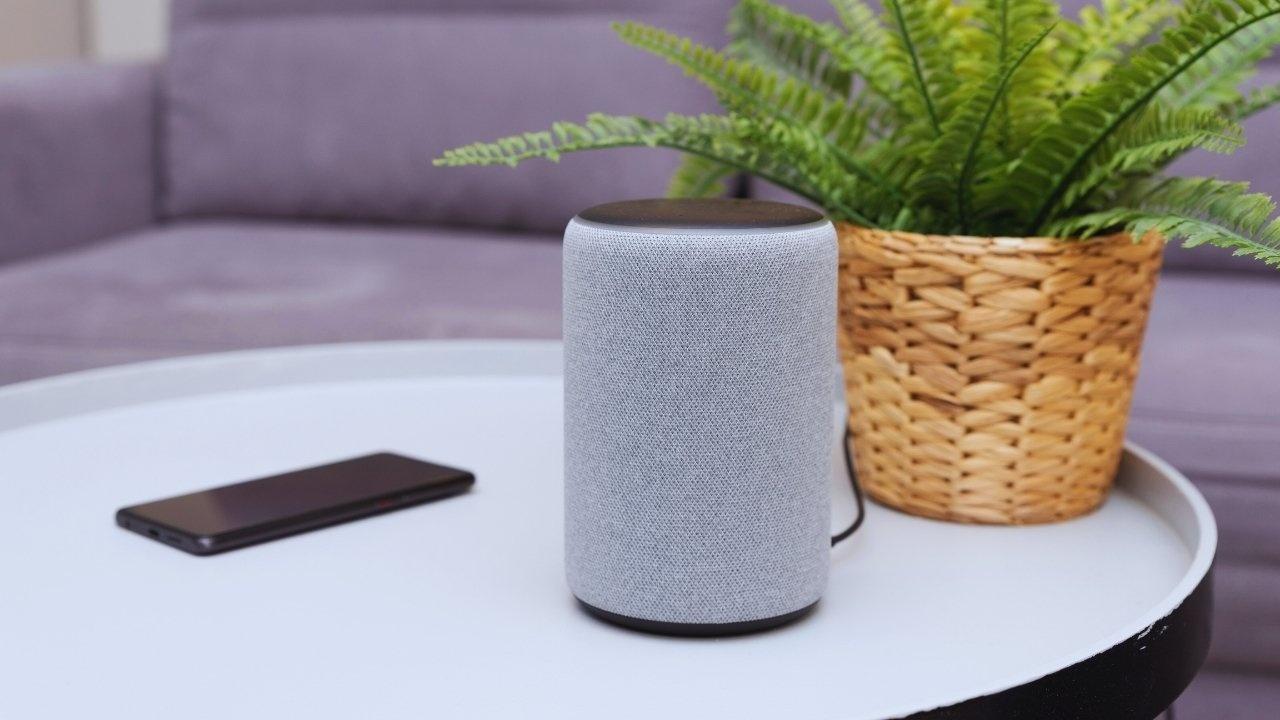
Join 10k+ people to get notified about new posts, news and tips.
Do not worry we don't spam!

Post by : Anis Farhan
Many envision voice assistants as solely smart speakers in domestic settings—devices tasked with playing music, setting alarms, or controlling lighting. However, the landscape of voice technology is rapidly transforming. With advancements in natural language processing, enhanced connectivity, and intelligent device ecosystems, voice interfaces are transitioning from mere gadgets to valuable tools that impact various contexts.
Voice technology is evolving from being just reactive—waiting for commands—to becoming ambient, proactive, and seamlessly integrated into our lives. It now appears in wearables, vehicles, enterprise solutions, retail, industrial IoT, and beyond. For tech journalists, especially those focusing on Asia and developing markets, this transition reveals fresh avenues for exploring user-device interactions, business adoption, and regional advancements in technology.
Voice assistants are improving not just in recognition but in comprehension. Advances in language models, contextual tracking, and dialect recognition enable these systems to perform in a wider array of environments and cater to diverse user demographics.
Rather than depending solely on cloud computing, numerous voice systems are adopting local or semi-local processing for speech. This strategy leads to reduced latency, decreased reliance on real-time connectivity, improved privacy, and greater resilience, especially in areas with less technological infrastructure.
The range of devices incorporated with voice technology is expanding significantly—spanning from vehicles and headphones to industrial equipment and healthcare systems. Voice features are now being integrated into more device types, including those not traditionally regarded as “smart speakers.”
Regions with limited literacy, keypad use, or familiarity with conventional interfaces are strong prospects for adopting voice technology. In multilingual, mobile-centric cultures, voice emerges as a natural mode of interaction, particularly for applications in commerce and services.
Businesses are increasingly recognizing that voice interfaces can expedite workflows, minimize obstacles, enhance safety, and facilitate hands-free operations in sectors such as manufacturing, logistics, healthcare, and field services.
Voice technology is making inroads into wearables like smartwatches, fitness trackers, AR glasses, and earbuds. These devices are increasingly supporting voice commands, context awareness (such as the user’s location, activity, and social situation), and proactive assistance. Picture voice suggestions based on your movement or heart rate.
Vehicles stand as a significant frontier for voice technology. Voice assistants are broadening their scope beyond navigation and media, now performing deeper actions: managing vehicle systems, providing contextual suggestions based on travel patterns, and interacting with external services (like parking or charging), thus integrating with smart-city infrastructures. Cars are evolving into voice-enhanced living environments.
While smart speakers retain their importance, the voice interface now spans every connected device in a home: from air conditioning and appliances to security and lighting systems. The smart home ecosystem is shifting toward a voice-activated environment rather than a single device.
Voice technology is reshaping shopping, ordering, payment processes, and customer service interactions. In retail, voice-enabled systems assist shoppers in obtaining information, checking inventory, executing transactions hands-free, or locating products. Online, voice search and commerce are rapidly increasing, particularly in multilingual regions.
In warehouses, factories, and service environments, voice interfaces allow workers to remain hands-free, capture data verbally, receive instructions, and interact with systems while engaged in physical tasks. This advancement enhances safety and productivity, shifting voice from a mere convenience to a central interface.
In markets with substantial mobile ownership, multiple languages, and large populations that prefer voice for accessibility, the technology is emerging in innovative forms: voice search, regional dialect support, voice-activated services, and kiosks. These solutions necessitate less typing and allow for more natural speech.
Voice integrations need to be responsive and precise. Any delay or misrecognition can detract from user experience. Intelligent systems will increasingly utilize on-device processing or hybrid models.
Particularly within wearables and home settings, voice systems that process data locally or limit cloud transmissions tend to gain user trust. People desire assurance that their vocal interactions are neither continuously recorded nor mismanaged.
Top-performing voice systems will retain context: user's location, past interactions, preferences, and environmental factors. They will not merely respond; they will predict.
Voice technology will increasingly converge with visual aids, gestures, sensors, and touch. Effective integrations will link voice capabilities across broader device networks—moving beyond simple command phrases to intelligent interactions (e.g., “your watch noticed your running; would you like a playlist or route suggestion?”)
In regions such as India, Southeast Asia, and Africa, voice integrations must accommodate diverse languages, dialects, and mixed speech patterns. The growth of voice technology in these areas will greatly depend on effective localization.
Companies adopting voice interfaces should consider not merely “can we incorporate this?” but “how does this contribute to workflows or improve outcomes?” Voice technology is increasingly recognized as a crucial strategic asset.
A smart speaker brand teaming up with major lighting and automation platforms for voice control beyond basic functionalities.
Wearable devices that proactively assist users by listening to their surroundings and responding to contextual cues.
Automobile companies embedding voice systems that offer suggestions for routes, parking, and smart-city coordination.
Retail self-service points where customers transact with voice in their native languages for assistance.
Industrial systems allowing technicians to use voice for real-time machinery checks, logging maintenance, and receiving guidance without pausing their tasks.
Voice technology is particularly significant in these regions because:
Large, mobile-driven populations where traditional typing can pose challenges.
Numerous languages and dialects, making voice more accessible than text.
Expanding smart-home, smart-city, and IoT sectors which enable better interconnectivity.
Business sectors increasingly adapting to vernacular interfaces in commerce and services.
Voice integration is poised to leap ahead of conventional interface systems, establishing novel service frameworks in these markets.
Noisy settings, overlapping speakers, regional accents, and mixed-language use present significant challenges for voice technology.
Wearables, edge devices, and IoT networks necessitate improved power, connectivity, and sometimes new devices, posing a challenge in developing markets regarding upgrade versus replacement.
Ambient devices with constant listening capabilities raise important considerations: where is the data stored, how is it utilized, and can it be shut off?
Voice systems must be interconnected with applications, APIs, device firmware, and enterprise solutions. This necessity introduces heightened complexity and costs.
Voice-centric interfaces will only succeed if users develop trust and adapt their habits, necessitating devices to provide consistent benefits to engage users.
Companies should seek real business value: cost savings, improved customer experiences, enhanced services. Incorporating voice for novelty alone won't sustain.
Feature stories detailing specific integrations (wearables, cars, enterprise applications).
Regional insights into voice technology adoption (focus on India, Southeast Asia, Africa).
Business strategies: how companies leverage voice technology to improve workflow and customer interactions.
Technical analyses: advancements in edge processing, localization for languages, and multi-device ecosystems.
Social impacts: accessibility, digital divides, privacy concerns, and emerging user demographics.
Future predictions: what lies ahead for voice tech—silent speech, gesture integration, brain-computer interfaces?
The future of voice extends far beyond a simple device in your living room. It thrives in wearables, vehicles, factories, stores, homes, and across vernacular landscapes seeking streamlined interactions.
For consumers, this translates to richer, more intuitive experiences. For businesses, it signifies a new layer of interaction that can differentiate services and refine operations. For journalists and editors, it opens new narratives—shifting focus from “which speaker” to “which context” and “what advantages.”










Paramount+ to Stream PBR’s 'Unleash the Beast' in New Five-Year Deal
Paramount+ will stream PBR’s 'Unleash the Beast' across the U.S. starting this December under a five

Zohran Mamdani Clinches NYC Mayoral Seat as Victory Speech Blends Politics and Bollywood
Zohran Mamdani won New York City's mayoral race, becoming the city's first Muslim and South Asian ma

India Wins First Women’s World Cup 2025 Title
India lifts its maiden Women’s World Cup 2025 title! Harmanpreet Kaur’s team stuns South Africa in a

Manuel Frederick, 1972 Olympic Bronze Goalkeeper, Dies at 78
Manuel Frederick, a member of India’s 1972 Olympic bronze hockey team, has died in Bengaluru at 78 a

Muhammad Hamza Raja Wins IFBB Pro Card Puts Pakistan & UAE on Global Stage
Pakistani bodybuilder Muhammad Hamza Raja earns IFBB Pro Card in Czech Republic, showcasing Dubai’s

Shreyas Iyer’s Recovery Underway After Spleen Laceration in Sydney ODI
Shreyas Iyer is recovering after a spleen laceration sustained while taking a catch in the Sydney OD